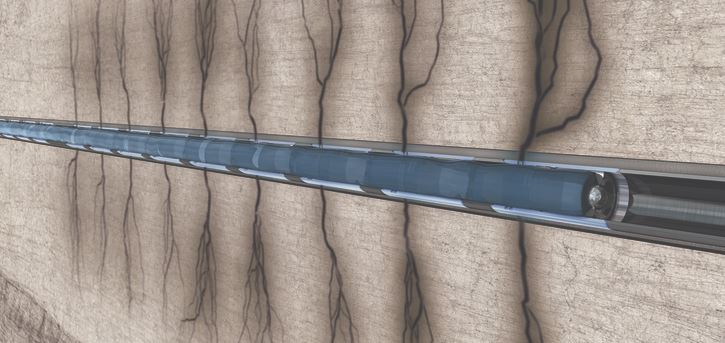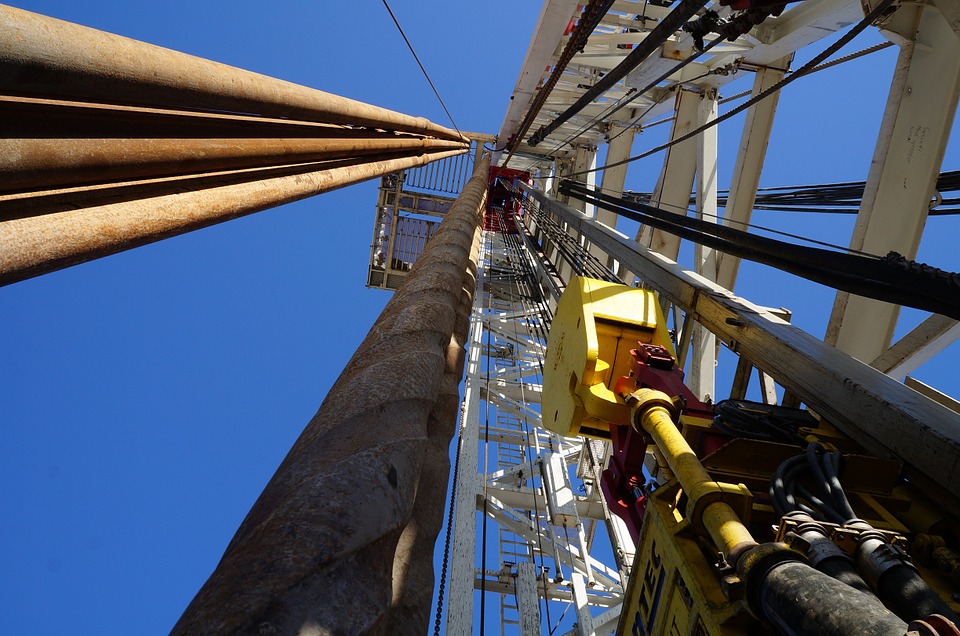Can Rocket Fuel Lower Carbon Emissions? Fracking Innovations In Oil and Gas May Provide Answers

With shocking spikes in gasoline prices and other energy costs, energy independence is on the minds of decision makers, but in the oil and gas rich nations, that could also mean higher carbon emissions. This has sent the sector scrambling for ways to reduce their carbon footprint with domestic production. One counter-intuitive and innovative solution from Canadian startup RocketFrac Cleantech actually involves using rocket fuel to boost oil and gas production while lowering overall emissions.
The first place most people’s minds go when they think of carbon-reducing cleantech is not rocket fuel, but renewables. While renewables are rapidly improving, they are nowhere near efficient or developed enough to meet the requirements of a rising population. They also come with their own environmental consequences and full cycle costs, including mining and tailings ponds, disposal of lithium batteries, and more.
With most developed countries communicating goals to achieve carbon neutrality by 2050, the current limitations with renewables leaves shorter-term improvements in the use of hydrocarbons as the most expeditious option for a lower carbon future. The shift from coal to natural gas is an example of significant reductions in carbon and greenhouse gas emissions being made within the sector. Conservatively, that simple shift in power generation fuel use equates to a 50-60% reduction in CO2 emissions.
To expand natural gas production with improved output efficiency an effective solution embraced by North America and other geographies around the world has been hydraulic fracturing, better known as ‘fracking’, which involves creating artificial fractures, increasing permeability of the underground rock formations. The natural gas produced using this method is a more climate-friendly alternative to coal for electricity generation.
Fortunately, there are improvements to be made even with the tried and true performance of conventional hydraulic fracturing.
Conventional hydraulic fracking provides affordable energy but with challenges associated with high volumes of fresh water use, and high emissions from surface equipment like diesel pumpers
Fracking is a surprisingly old idea. It dates back to 1865 when Colonel Edward Roberts filed a patent for an ‘exploding torpedo’. Roberts found that if an explosive were lowered into an oil well and detonated, it would shatter the surrounding rock, creating channels for the oil to flow to the well bore.
Various explosives were used for the technique until the 1940s when they were replaced with high-pressured liquid. However, fracking really took off this century with the development of ‘slick water’ – a mix of water, sand, and chemicals – and horizontal drilling.
Oil or gas well-bores are encased in steel and cement that seals the production process off from ground water, preventing the contamination of drinking water from fracking or other oil production processes. Fracking and horizontal drilling take place thousands of feet below the freshwater table, or aquifers, which are widely used as sources of freshwater for drinking and agriculture.
The fracking operations themselves require extensive equipment, often including a dozen or more large trucks and pumping equipment for water, sand and chemicals, which improve the viscosity and other properties of the fracking fluid. Quantities and scale vary widely depending on the specific project, but a typical well might use around four million gallons of water.
It is these large scale operations that provide RocketFrac Cleantech the opportunity to lower carbon emissions.
New developments are improving fracking and solving many of these issues
RocketFrac Cleantech has found a way to significantly improve the fracking process by replacing dozens of trucks and millions of gallons of water with a single truck that deploys a solid rocket-fuel tool in a fraction of the time. This well stimulation process eliminates the need for water, frack sand, and chemicals, ultimately reducing greenhouse gases and environmental impacts.
Pavan Elapavuluri, RocketFrac Cleantech’s CTO, explains, “Traditional fracking uses millions of liters of water and tonnes of sand to increase well productivity by fracturing the rock hundreds of feet below the surface of the earth.
“RocketFrac Cleantech replaces this carbon-intensive process of pumping huge amounts of water and sand with high-pressure gases generated deep in the wellbore by specially designed solid rocket fuel deployed using a customized tool to generate fractures. As a result, RocketFrac improves well completion efficiencies while dramatically reducing the environmental footprint of fracking.”
The use of rocket fuel in fracking was researched in the 1970s, and while it proved effective, several technical problems stopped it from being deemed viable. However, in the past two years RocketFrac’s cleantech team made critical, patent-pending design breakthroughs in the fracking tool. In conjunction with a major Canadian aerospace firm they also developed an ultra-high energy output solid rocket fuel formulation capable of fracking the reservoir in a manner comparable to hydraulic fracturing.
Fracking advances improve sustainability
Tom Whalen, the CEO of RocketFrac Cleantech, stresses the importance of these developments and says, “The world must more responsibly and sustainably use its carbon resources through employment of the three R’s; Reduce, Reuse and Replace to minimize the environmental impacts.”
“By addressing water and frac sand use, RocketFrac Cleantech allows energy companies to make a dramatic improvement in how they design and complete their wells while protecting the environment. RocketFrac is a great example of how cleantech is making a difference in the energy mix transformation.”
Another advantage of this technology is efficiency, he notes, “By applying science and advanced technology, we further reduce the environmental impact by dramatically improving logistical operations. This accelerates the implementation of cleaner energy sources in the future.”
Whalen adds, “We’re simultaneously disrupting the energy industry and protecting the environment in several ways. For example, fresh water sources are something people often take for granted, but they are increasingly scarce. We want to preserve these resources for future generations.”
The ideas and technology behind RocketFrac Cleantech have proved popular. The company won’t go public for several months, but there have been multiple successful financing rounds, including a recently oversubscribed round of $3 million. The company has also partnered on downhole technology development with its aerospace partner, and secured the Honorable Ronald R. Spoehel, former CFO of NASA, as Chairman of the Board.
Fracking has come a long way since Colonel Roberts dropped a torpedo down an oil well, but the principles are the same. Some advances, such as pad and horizontal drilling, higher pressure and volumes of slick water use, created environmental benefits by increasing output from a single wellbore, reducing the total surface area footprint. The next great innovation is eliminating water use entirely by using RocketFrac’s proprietary solid rocket fuel technology as the means to fracturing the oil or gas formation.
As the world demands more clean power, oil and gas cleantech companies like RocketFrac Cleantech will play an increasingly significant role.





